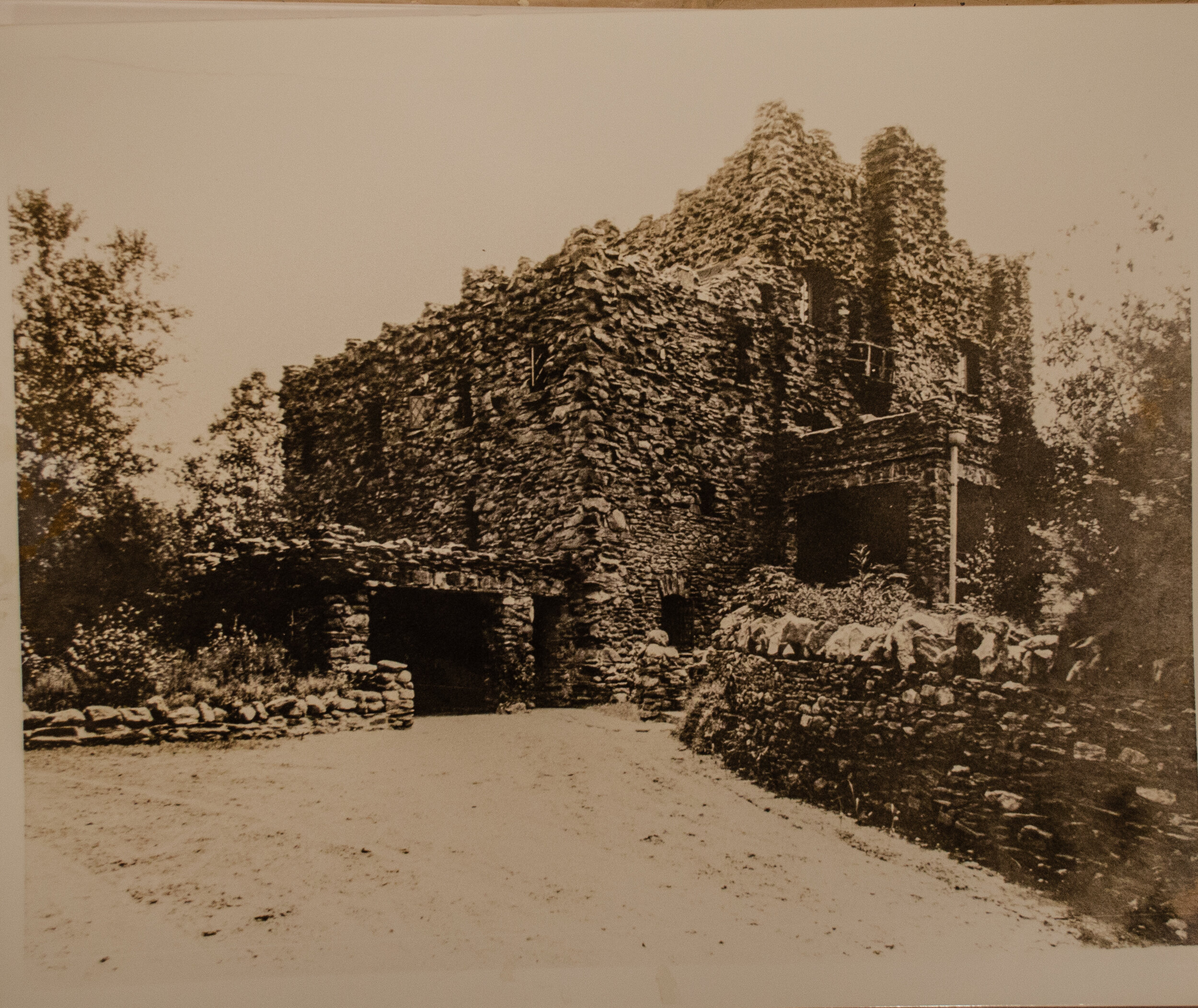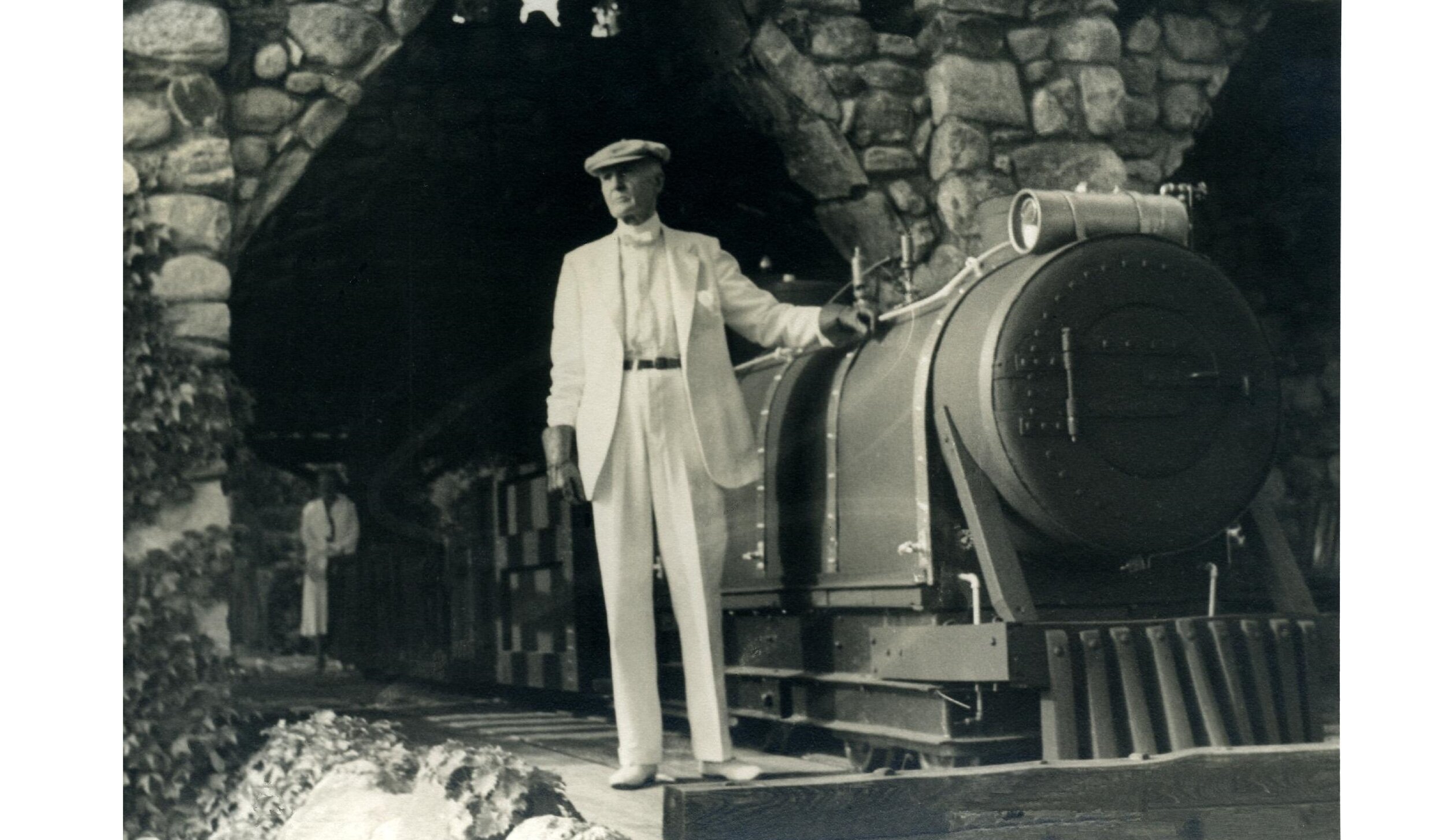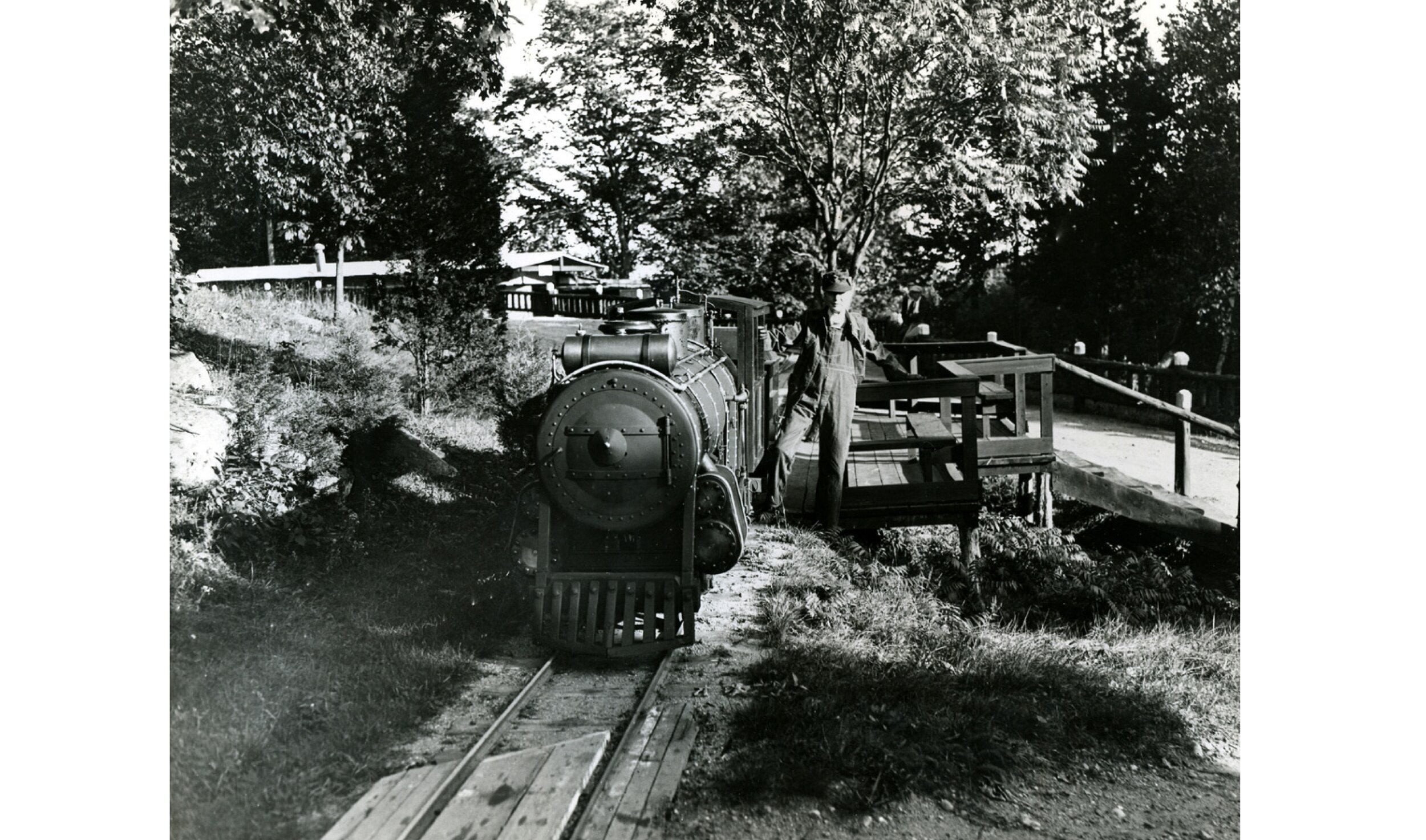William Gillette and his “Castle”
Atop the most southerly hill of a chain of hills known as the Seven Sisters sits the retirement estate of noted actor, director, and playwright William Hooker Gillette. Named the Seventh Sister by Gillette, the property’s focal point is a 24-room stone mansion reminiscent of a medieval castle.
William Gillette was born in 1853 in Hartford, Connecticut. His father, Francis, was a Yale-educated lawyer, farmer and prominent politician who served a term in the U.S. Senate. His mother, Elisabeth, was a descendant of Thomas Hooker, the founder of Connecticut. Will grew up in the Nook Farm neighborhood of Hartford with the likes of Harriet Beecher Stowe and Samuel Clemens (Mark Twain) as neighbors. Will left home to pursue an acting career and went on to become one of the most successful and significant stage actors in American theater at the turn of the 20th century.
William Gillette as Sherlock Holmes
William Gillette’s most recognized role is that of Sherlock Holmes. With the permission of Sir Arthur Conan Doyle, the fictional detective's creator, Gillette wrote the first authorized play adaptations of the novels. Beginning in 1899, Gillette went on to star as Sherlock Holmes more than 1,300 times over the course of 33 years. Gillette originated and popularized many common features of the character: the deerstalker cap, curved pipe, magnifying glass and the phrase “elementary, my dear fellow” (which later evolved into “Elementary, my dear Watson,” one of the most recognized lines in popular culture).
Personal Life
William Gillette married Helen Nichols, an actress from Detroit, in 1882. In 1888, she died from a ruptured appendix at the age of 28. Will promised her that he would never remarry. He outlived Helen by 49 years, staying single and childless for the rest of his life.
Helen Gillette
Building The Castle
The Castle was meant as a retirement home. As William Gillette insisted that it was not a castle, the official name of the property was the Seventh Sister Estate. Informally, it was the "Hadlyme stone heap" or simply "the pile of rocks." Design of the Castle and all the quirks and eccentricities therein was done by William Gillette. The Porteus-Walker Company of Hartford was hired as the general contractor.
Construction was started in 1914 and completed in 1919, with Gillette later modifying the building, including the expansion from 1923 to 1926. As a finished product, the 14,000-square-foot building contained 24 rooms and cost $1.1 million to complete. Work on the home was done primarily by a team of 20 men. The house is built of fieldstone collected from the property and surrounding area. A team of five master carpenters created all of the woodwork for the Castle, carving southern white oak by hand. The entire structure is well supported by a frame of steel I-beams.
For the time, the house had all the modern utilities. Electricity was provided by generator before the rest of the town had access. Hand-carved wooden light switches were meant to resemble levers backstage or operating switches for a railroad. Light fixtures ranged from Gillette’s handmade craft lights to Quezal globes to two made by Tiffany & Co. Red mortar and grass floor tiles used as wall coverings are more examples of the building’s uniqueness. The house had several bathrooms, each with a modern toilet, sink and bathtub, and hot and cold water. Central heating originated from a coal-fired boiler in the basement and provided steam to fill the cast-iron radiators spread around the home.
The woodwork within the Castle is hand-hewn southern white oak. Gillette designed 47 one-of-a-kind doors within the structure, each having a unique, elaborate latch intricately carved of wood. Pieces of furniture such as the dining-room table and office chair were set on tracks to avoid damaging the floors. A built-in liquor cabinet could be locked by Gillette who then could view it from the second-floor balcony through one of three strategically placed mirrors. The home also includes a 1,500-square-foot living room, a greenhouse, several guest bedrooms, an art gallery, a library and two tower rooms.
Seventh Sisters Railroad
William Gillette had a love of trains since childhood and always wanted to drive one. In 1927, Gillette built a quarter-scale, narrow-gauge railroad around his 122-acre property. The railroad included two engines (one steam, one electric), several passenger cars, and three miles of track complete with bridges, turnarounds and a tunnel. There is a railroad station (called “Grand Central”) with a spectacular view of the Connecticut River that used to house Gillette’s railway cars, and the modern walking trails follow much of the old railroad bed. On the grounds, one also will find a covered bridge, a tunnel, several wooden bridges and Gillette’s goldfish pond.
From private estate to gillette castle state park
William Gillette died in 1937 at the age of 83 and nine months. The estate was left to his cousin and brother-in-law. They tried to sell the Castle at auction in 1938. The winning bid was $35,000 from a real estate broker; however, the relatives rejected it. The reason is that Gillette said in his will that he did not want the property “in the possession of some blithering saphead who has no conception of where he is or with what surrounded.” In 1943, the State of Connecticut, with help from the Connecticut Forest and Park Association, purchased the property from Gillette’s family at a cost of $30,000. Gillette Castle State Park first opened to the public on October 7, 1944, as a museum and state park.

















